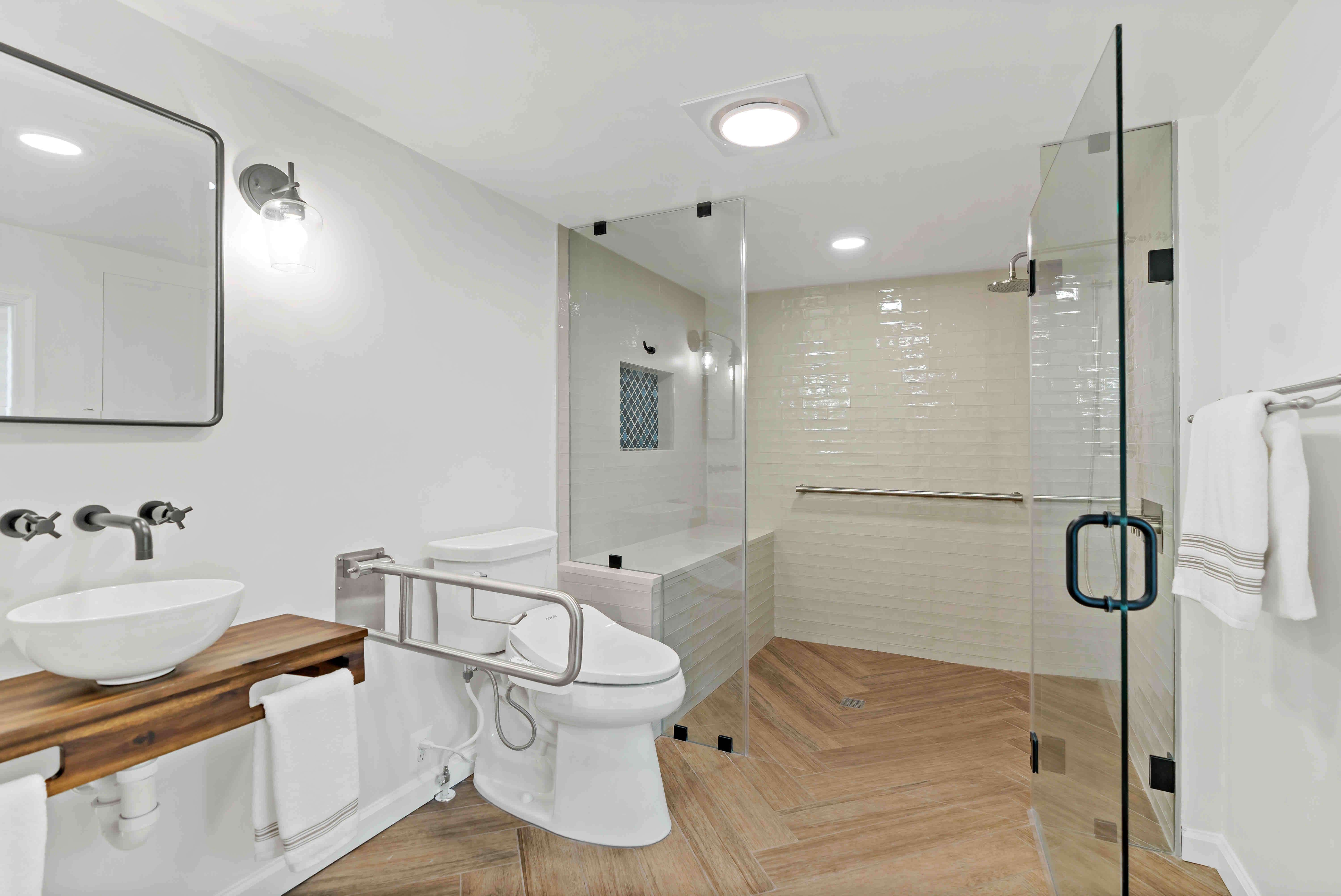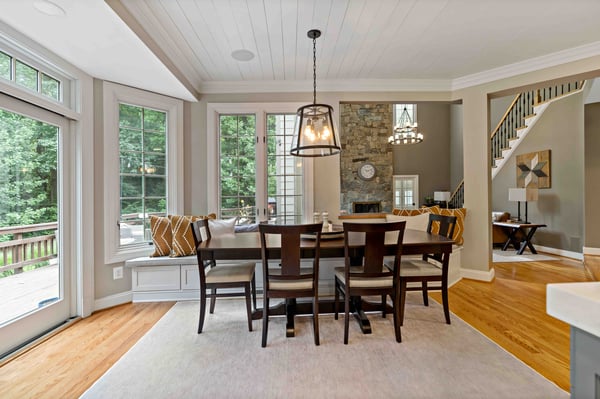
Aging in Place: Senior-Friendly Home Remodeling Ideas
As we age, it becomes increasingly important to create a safe and comfortable living environment that supports our changing needs. Aging in place is a concept that has gained popularity in recent years, emphasizing the idea that seniors can continue to live independently in their own homes for as long as possible. In this article, we will explore the key principles of aging in place, discuss how to assess home safety for seniors, and highlight essential features and technologies that can make a home more senior-friendly. We will also touch upon financing options for home remodeling projects to accommodate aging in place.
Understanding the Concept of Aging in Place
At its core, aging in place means enabling seniors to live in their homes comfortably and safely as they age. It promotes the idea of maintaining independence and autonomy by adapting the living space to meet the changing needs of older adults. This approach not only allows seniors to preserve familiar surroundings but also helps them maintain social connections and emotional well-being.
The concept of aging in place has gained significant attention in recent years as the aging population continues to grow. With advancements in healthcare and technology, more and more seniors are able to live longer and healthier lives. However, it is important to recognize that aging in place is not just about physical accommodations, but also about creating a supportive environment that addresses the unique needs and challenges faced by older adults.

The Importance of Aging in Place
Aging in place offers numerous advantages both for seniors and their families. Firstly, it allows older adults to retain a sense of control over their lives and make choices that align with their preferences and values. This sense of control is crucial for maintaining a sense of dignity and self-worth. Additionally, remaining in one's home can often result in cost savings compared to moving to assisted living facilities or nursing homes. By avoiding the high costs associated with institutional care, seniors can allocate their resources towards other important aspects of their lives, such as healthcare, social activities, and personal interests.
Furthermore, aging in place minimizes the disruption and stress associated with relocating. Moving to a new environment can be overwhelming, especially for older adults who have spent many years in their homes. By staying in familiar surroundings, seniors can maintain stability and a sense of familiarity in their daily routines. This can have a positive impact on their overall well-being and quality of life.
Key Principles of Aging in Place
When considering aging in place, it's important to keep certain principles in mind. One fundamental principle is accessibility. Ensuring that the home is easily navigable for seniors is crucial. This includes taking into account mobility challenges, such as installing ramps or stairlifts. Additionally, it may involve making modifications to doorways, hallways, and bathrooms to accommodate walkers, wheelchairs, or other assistive devices. By creating a barrier-free environment, seniors can move around their homes with ease and independence.
Another key principle of aging in place is safety. Identifying and addressing potential hazards is essential to prevent accidents and injuries. This may involve installing grab bars in bathrooms, improving lighting throughout the home, or removing tripping hazards such as loose rugs or cluttered pathways. By proactively addressing safety concerns, seniors can reduce the risk of falls and other accidents, allowing them to live with peace of mind.

Lastly, adaptability is vital when it comes to aging in place. The home should be able to accommodate changes in health and mobility over time, whether through remodels or incorporating assistive devices. This may include installing adjustable countertops and cabinets in the kitchen, adding handrails in hallways, or installing smart home technology to assist with daily tasks. By creating a flexible living space, seniors can continue to live independently and comfortably as their needs evolve.
In conclusion, aging in place is a concept that emphasizes the importance of enabling seniors to live in their homes comfortably and safely as they age. It offers numerous benefits, including the preservation of independence, cost savings, and reduced stress associated with relocation. By following key principles such as accessibility, safety, and adaptability, seniors can enjoy a higher quality of life and maintain their sense of autonomy as they navigate the aging process.
Assessing Home Safety for Seniors
To create a safe environment for aging in place, it is crucial to assess potential hazards within the home. Identifying these hazards allows for prioritizing areas in need of remodeling or modification.
Identifying Potential Hazards
Start by evaluating the layout and design of your home. Are there any tripping hazards such as loose rugs or uneven flooring? Are there obstacles that hinder movement or can lead to accidents, such as furniture with sharp edges? It is also important to check for sufficient lighting throughout the house, especially in hallways, stairs, and bathrooms.
Prioritizing Areas for Remodeling
After identifying potential hazards, it's time to determine which areas need immediate attention. Consider factors such as the frequency of use, the importance of the space, and the level of risk it poses to the senior's well-being. High-priority areas may include the bathroom, kitchen, and entryways where falls are common. By focusing on these critical areas first, you can create a safer living environment for seniors.

Essential Features of a Senior-Friendly Home
A senior-friendly home should be designed with accessibility and mobility in mind. Making necessary modifications and incorporating certain features can greatly enhance safety and ease of use.
Accessibility and Mobility Considerations
One of the key considerations is ensuring that the home is wheelchair accessible. Installing ramps, widening doorways, and removing thresholds can make it easier for seniors with mobility challenges to navigate the house. Additionally, lever-style door handles and touchless faucets are more user-friendly for those with limited dexterity.
Lighting and Visibility Enhancements
Good lighting is essential for seniors, as it reduces the risk of falls and enhances overall visibility. Install bright, energy-efficient LED lights and consider motion-activated lighting in key areas, such as hallways and staircases. Adding extra windows or skylights can also increase natural light, making the home feel brighter and more inviting.
Bathroom and Kitchen Modifications
The bathroom and kitchen are areas where accidents are more likely to occur, making them critical spaces to address when it comes to home modifications for seniors. Installing grab bars in the bathroom can improve stability and prevent falls, while walk-in showers with benches and handheld showerheads offer convenience and accessibility. In the kitchen, consider lowering countertops and installing pull-out shelves to minimize bending and reaching.

Incorporating Technology for Ease and Comfort
Advancements in technology have made it easier than ever to create a senior-friendly home. From smart home features to assistive devices, these innovations can greatly enhance comfort and quality of life for older adults.
Smart Home Features for Seniors
Smart home technologies can be particularly beneficial for aging in place. Voice-activated assistants, such as Amazon Echo or Google Home, allow seniors to control various aspects of their home, including lighting, temperature, and entertainment, through simple voice commands. Smart thermostats and doorbell cameras with remote access also provide convenience and peace of mind.
Assistive Devices for Aging in Place
Various assistive devices can assist seniors in maintaining independence and safety at home. These can range from simple gadgets like reacher grabbers and pill organizers to sophisticated medical alert systems that provide emergency assistance at the press of a button. When selecting assistive devices, consider the specific needs and limitations of the senior to ensure the chosen devices effectively address their requirements.

Financing Your Home Remodeling Project
While the idea of remodeling your home for aging in place may seem daunting, there are financing options available to help you achieve your goals without breaking the bank.
Budgeting for Your Remodel
Before embarking on any remodeling project, it's crucial to establish a budget. Determine how much you are willing to spend and prioritize the areas that require immediate attention. Research the costs of materials and labor, and consider consulting with a professional contractor to get accurate estimates.
Exploring Financial Assistance Options
Many financial assistance options exist to help seniors cover the costs of home remodeling for aging in place. These can include government grants and loans, as well as non-profit organizations that provide financial support for seniors looking to modify their homes. Additionally, some insurance policies may offer coverage for certain home modifications. Research these options thoroughly to find the best fit for your specific circumstances.

By incorporating senior-friendly features and technologies into your home, you can create a safe and comfortable environment that enables aging in place. Taking the time to assess home safety, prioritize remodeling projects, and explore financing options can make the process more manageable. With careful planning and attention to detail, you can ensure that your home remains a haven of independence and well-being as you navigate the later stages of life.
